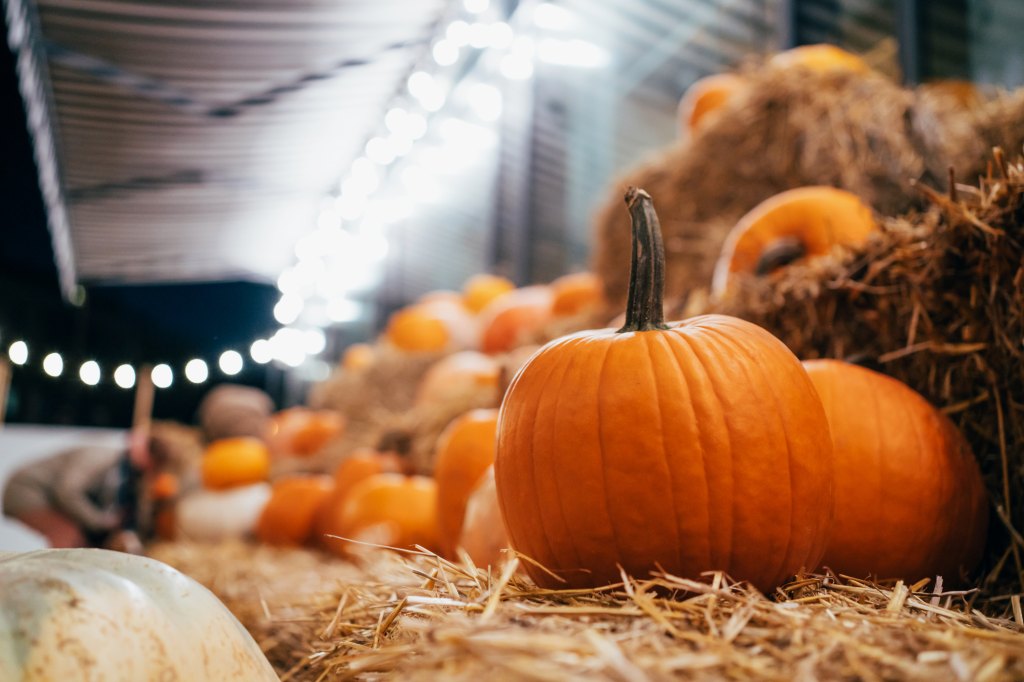Pumpkins are the crown jewel of fall, adding more than just a pop of color to our decor—they’re a nutritional powerhouse, low in calories and packed with Vitamin A and dietary fiber. Whether you’re using them in soups, pastas, or even desserts, pumpkins can do it all. But before you carve into that bright orange beauty, let’s walk through everything you need to know about growing, prepping, cooking, and storing pumpkins to get the most out of this seasonal favorite.
What is pumpkin?
Pumpkins are technically a fruit, just like grapes, because they grow on a vine. Cultivated for over 5,000 years, pumpkin season hits its peak in fall, especially around Halloween when pumpkins are the go-to choice for jack-o’-lanterns. While they may be synonymous with spooky carvings, pumpkins are so much more versatile than that. The variety of shapes, sizes, and flavors means there’s a perfect pumpkin for every dish.
Growing and storing pumpkins

Pumpkins thrive in warm weather and need soil temperatures around 70°F to properly germinate. Typically, they’re harvested in October, but here’s an insider tip: after harvesting, pumpkins are cured in the sun to harden their skin, making them last longer in storage. As they age, pumpkins also become sweeter—an added bonus if you’re planning to use them in pies or desserts!
When storing pumpkins, keep them whole and place them in a cool, dark, well-ventilated space. Properly stored pumpkins can last for months, making them a great ingredient to keep on hand throughout the fall and winter. However, once you’ve cut into a pumpkin, things change. Remove the seeds and stringy pulp, then store the remaining flesh in an airtight container in the refrigerator, where it will stay fresh for up to five days.
How to choose the perfect pumpkin
If you’ve ever gone pumpkin picking before, you know no two look the same. But choosing the right one can make a world of difference in your kitchen. Look for pumpkins that are firm, heavy for their size and free of any soft spots or damage to the skin. Bonus points if the pumpkin still has its stem attached—it helps prolong freshness.
Pumpkins come in a wide range of varieties. Smaller pumpkins, such as sugar pumpkins, are ideal for baking because of their sweet, dense flesh. On the other hand, larger pumpkins are great for savory dishes or carving up for fun. If you’re unsure, go for a mid-size pumpkin that’s heavy and solid to the touch.
How to prep and cook pumpkin

Prepping a pumpkin may seem daunting at first, but with a few simple steps, you’ll have it ready to go for any recipe. The easiest way to cook pumpkin is to roast it whole. Place the entire pumpkin on a baking sheet and roast until the skin is soft and easy to peel. If you prefer to cut it first, here’s how:
- Start by cutting the pumpkin in half and scooping out the seeds and fibers.
- Use a large, sharp chef’s knife or a serrated blade with a see-saw motion to cut the pumpkin into smaller pieces. Be sure to work on a sturdy cutting board that’s larger than the pumpkin.
- Peel the skin if the recipe requires it, or leave it on for roasting—once roasted, the skin is tender and easy to remove.
Pro tip: The seeds you scoop out can be cleaned and roasted for a crunchy snack. Simply rinse them, toss with oil and seasoning, and bake at 300°F for 20 to 30 minutes.
If you’re cooking with hard-skinned varieties like kabocha, delicata or butternut squash, the flesh may vary in water content and density. These pumpkins have a naturally sweeter taste and are easier to handle, making them ideal for soups or smooth purees.
Storage and freezing tips

Once cooked, pumpkin can be stored in the refrigerator for up to five days. If you’re not ready to use it right away, pumpkin also freezes beautifully. Simply puree the cooked pumpkin, portion it into freezer-safe containers or bags, and freeze for up to three months. When you’re ready to use it, thaw in the refrigerator overnight or defrost it in the microwave.
For extra convenience, freeze the puree in ice cube trays for small, recipe-ready portions. Toss a few cubes into smoothies, sauces, or soups for an easy way to add flavor and nutrition.
